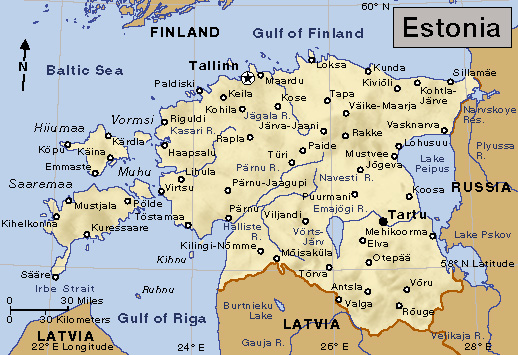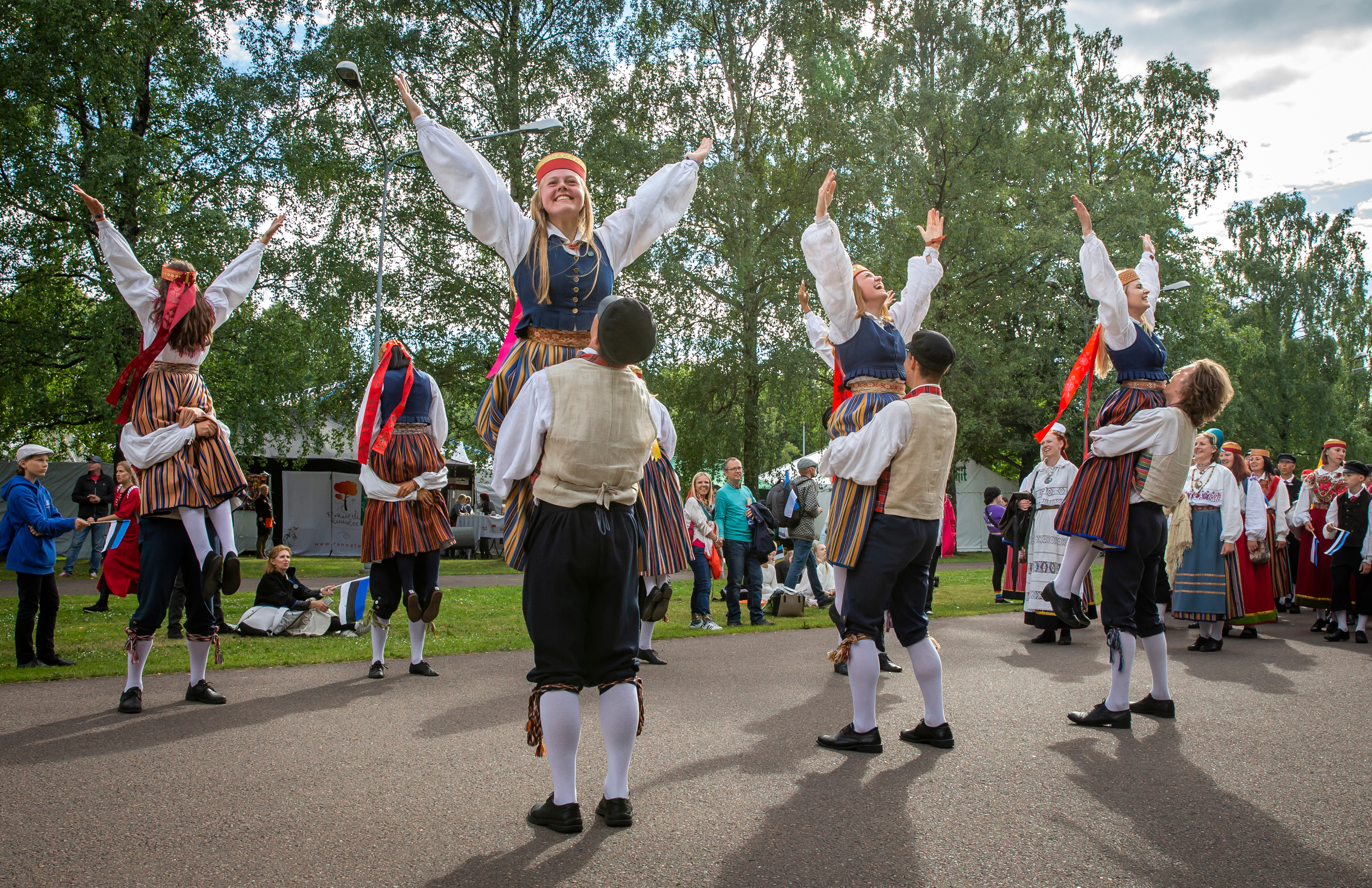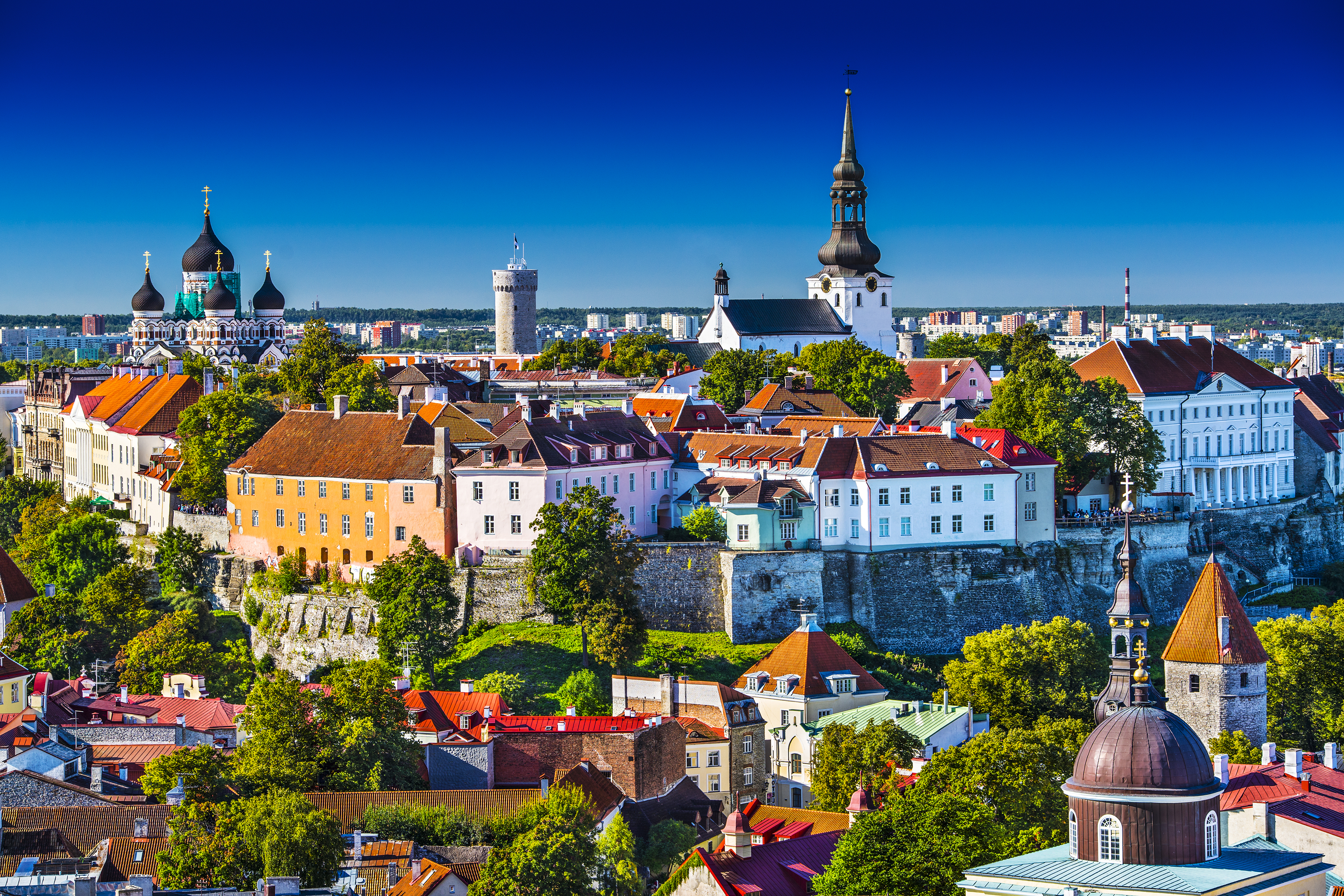Estonia << eh STOH nee uh >> is a country on the Baltic Sea in northeastern Europe. The country’s name in Estonian, the official language, is Eesti Vabariik (Republic of Estonia). Tallinn is Estonia’s capital and largest city.

Through the centuries, Germans, Danes, Swedes, Poles, and Russians controlled Estonia, but Estonians continued to foster their own culture and language. The country was independent from 1918 until 1940, when the Soviet Union occupied it and made it one of the 15 Soviet republics. Estonia regained its independence in 1991.
Government.
Estonia has a parliamentary democracy. The parliament has 101 members, elected by the people to four-year terms. The president, the head of state, is chosen by the parliament for a five-year term. The prime minister, recommended by the president and approved by the parliament, heads government operations.

People.
About 70 percent of the population are Estonians, a people related to the Finns. Russians make up about a quarter of the population. Estonia also includes small groups of Ukrainians, Belarusians, and Finns. The Estonian language is closely related to Finnish.

Most Estonians are urban dwellers and live in apartments in cities or towns. Many Estonians have colorful traditional costumes, which they wear on festive occasions. Folk songs have a long tradition in Estonia. A song festival is held every five years in Tallinn. It attracts thousands of singers and hundreds of thousands of visitors.
Many people in Estonia belong to the Lutheran and Eastern Orthodox churches. Estonia has several colleges and universities. The oldest and best known is the University of Tartu, founded in 1632.
Land and climate.
Estonia consists chiefly of a low plain. Farmland covers about 25 percent of the country, and forests about 50 percent. Lake Peipus and the Narva River form much of the eastern boundary.
Estonia, Latvia, and Lithuania are often called the Baltic States. Estonia has a total of 481 miles (774 kilometers) of coastline on the Baltic Sea, the Gulf of Finland, and the Gulf of Riga. The sandy western coast is a favorite resort area. Estonia has more than 1,500 islands, the largest of which is Saaremaa Island.

Estonia has a surprisingly mild climate for an area so far north. Sea winds help keep the weather from becoming very cold or hot. Temperatures average from about 24 to 29 °F (–4 to –1 °C) in January to 63 to 65 °F (17 to 18 °C) in July. Estonia receives an average of 21 to 26 inches (55 to 65 centimeters) of rain annually.
Economy.
Service industries employ more than half of Estonia’s workers. Hotels, restaurants, and shops benefit from the tourists who visit Estonia from Finland, Russia, and other countries.
Manufacturing employs about a fifth of the workers. Estonia’s manufactured products include chemicals, electronics, furniture, processed foods and beverages, and wood and wood products. Tallinn is an important center for fashion and design.
Oil shale is the country’s most important mineral resource. It is used extensively as fuel for electrical power plants. Peat is also mined in Estonia.
Estonia’s chief agricultural products include barley, beef and dairy cattle, chickens, eggs, hogs, potatoes, rye, and wheat. Commercial fishing is also important.
History.
Scientists have found evidence that human settlements existed in Estonia as early as 9000 B.C. The ancestors of the Estonians settled there several thousand years ago. They formed several independent states headed by elected elders.
Early rulers.
During the early 1200’s, the Teutonic Knights, an organization of German crusaders, converted the Estonians to Christianity by force (see Teutonic Knights). They took control of southern Estonia, and Danish forces conquered the north. The Danes sold their Estonian holdings to the Teutonic Knights in 1346.
By the 1500’s, German nobles owned much of Estonia’s land and controlled thousands of Estonian serfs. Serfs worked on the estates of the nobles. In 1561, Sweden took over northern Estonia, and Poland conquered the southern part of the country. Sweden controlled all of Estonia from 1625 to 1721, when the area fell to Russia. But German nobles kept estates there until 1919.
The serfs were freed in 1816, but most of the land remained in the hands of German nobles. In 1868, former serfs gained the right to buy land. Some became successful landowners and educated their children well. Others found industrial employment in cities.
Independence.
A national revival begun in the mid-1800’s led to the establishment of Estonia as an independent country. Estonia proclaimed its independence on Feb. 24, 1918. Russia recognized Estonia’s independence in 1920. The Estonian constitution established a democratic form of government. In 1919, the government took over the country’s large estates and began distributing the land to thousands of Estonian citizens.
Soviet rule.
The Soviet Union was formed in 1922 under Russia’s leadership. In 1939, the Soviet Union and Nazi Germany agreed secretly to take over a number of eastern European countries between themselves. The Soviet Union established military bases in Estonia. Soviet forces occupied Estonia in June 1940. In August, the Soviets forcibly made Estonia part of the Soviet Union. Germany occupied Estonia in 1941, during World War II, but the Soviet Union regained control of Estonia in 1944.
Estonia went through great social and economic changes under Soviet rule. At the time of the Soviet take-over in 1940, Estonians made up about 90 percent of the country’s population. When Estonia regained independence in 1991, Estonians made up about 60 percent of the population. Most Estonians opposed Soviet rule, and in 1941, before the German occupation, the Soviet government deported about 10,000 Estonians to Siberia. About 100,000 Estonians fled to Western countries after the Soviet take-over. Hundreds of thousands of Russians settled in Estonia during Soviet rule.
Before Estonia became a Soviet republic, almost two-thirds of the Estonians farmed and lived in rural villages. But during Soviet rule, many people moved to the cities to find industrial jobs. The Soviets prohibited private factories and farms, and they established government-controlled enterprises. They created economic plans that emphasized industrial growth. Thus, Estonia experienced much industrial development. Although its economy was advanced by Soviet standards, there were widespread complaints about the shortages and poor quality of goods and services. Economic development brought many Soviet immigrants to work in Estonia. Industrial pollution became a major problem.
Resistance to Soviet rule.
After World War II ended in 1945, movements against Soviet control appeared periodically. A strong guerrilla resistance against the Soviets lasted for several years after the war. In 1949, about 20,000 Estonians were deported to Siberia. A movement to promote human rights began in the 1960’s.
During the late 1980’s, a new wave of Estonian nationalism appeared. It was fueled in part by Soviet leader Mikhail Gorbachev’s call for greater openness of expression in the Soviet Union. Most Estonians demanded greater control over their government and economy. Many demanded complete independence from the Soviet Union.
Independence regained.
In 1990, the Estonian parliament declared the 1940 Soviet annexation illegal and Soviet rule in Estonia invalid. The parliament called for the restoration of Estonian independence through a gradual separation from the Soviet Union. The Soviet Union called the parliament’s action illegal.
In August 1991, hard-line Communist officials failed in an attempt to overthrow Gorbachev and take over the Soviet government. During the upheaval that followed, Estonia declared immediate independence. In September, the Soviet Union recognized Estonia’s independence. In December, most of the republics formed an association called the Commonwealth of Independent States. Estonia declined to join, however, because it feared that Russia would control the group. On December 25, the Soviet Union was dissolved.
After becoming independent, Estonia moved forward with economic reform and reduced government control of most economic activities. By the mid-1990’s, most businesses had become privately owned. The centrist Centre Party and the pro-business Reform Party had the greatest success in elections. The parties often partnered with smaller conservative, liberal, or nationalist parties to form coalition governments. Relations with Russia and immigration became frequent subjects of political debate.
Estonia sought to strengthen its ties with western Europe and to reduce Russian influence over its affairs. In 2004, Estonia joined both the European Union (EU) and the North Atlantic Treaty Organization (NATO). The EU is a group of European countries that promotes economic and political cooperation among its members. NATO is a military alliance that includes the United States, Canada, and many European countries. Estonia adopted the euro—the EU currency—in 2011.
Parliament elected Kersti Kaljulaid as the country’s first woman president in 2016. She served until 2021. In 2021, Kaja Kallas of the Reform Party became Estonia’s first woman prime minister.
See also Baltic States; Lake Peipus; Tallinn; Tartu; Union of Soviet Socialist Republics (U.S.S.R.).
